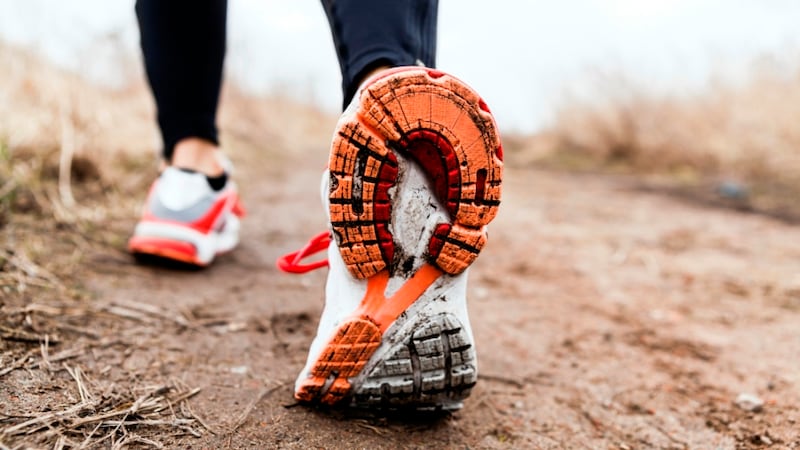IT’S AN UNFORTUNATE rule of the road: take up running and there’s a good chance that injury will follow. It starts off as a minor twinge, something you think you can avoid. You try to run through it. But it morphs into grimace-inducing pain that threatens to suck up all the joy of running.
Most running injuries are due to overuse, overtraining, improper shoes or a flaw in the way the body moves. The problem is, many of us don’t know what exactly is causing the aches and pains we experience.
Dylan Crowe, a sports therapist at the Posture Centre in Dublin, deals with the walking – or hobbling – wounded on a daily basis.

“It’s especially common when people are new to running. I see a lot of problems with people’s calves. From doing nothing to suddenly running for a previously sedentary person can put a big load on the lower legs,” he says. But it’s not just newbies who are vulnerable. He also sees seasoned runners with injuries and, more often than not, it’s their knees.
“That tends to come with overtraining. Increasing mileage too quickly, without cross training, can easily cause problems,” he says.
The good news is, many of these running injuries can be prevented. By following a few simple rules, it’s possible to stay injury-free and take the pain out of pounding the pavement.
1. Check your posture
Running coach Greg MacMillan is a big believer in “running tall”. He says we slouch far too much, due to being hunched in front of computers all day. By running in a relaxed, upright manner, you can help prevent injuries and reach your full potential.
“No head in front of your body, and no butt sticking out,” he says. “I’ve coached high-schoolers up to senior citizens – I know that just by telling them to run tall, their running technique improves greatly, no matter how experienced they are.”
Another option is to get a full posture and gait assessment by a physical therapist or similar expert. Crowe says this will help identify weakness and imbalances in your body.
“Once you start your corrective exercises your joints will begin to stack properly on top of each other,” he says. “This will lead to fewer torsions, shifts and stress in the musculoskeletal system. This reduces chances of injury.”
2. Know your limits
It’s easy to get carried away. The body needs time to adapt from training changes and jumps in mileage or intensity. Muscles and joints need recovery time in order to handle more training demands. If you rush that process, you could break down rather than build up.
Most experts subscribe to the 10 per cent rule: build your weekly training mileage by no more than 10 per cent per week. If you run 10 miles the first week, do just 11 the second week, 12 the third, and so on.
3. Listen to your body
The oldest advice is often best. Veteran marathon runner Hal Higdon consistently warns people not to run through pain. A rest can help nip an injury in the bud. Remember, he says,your body sends signals – aches, twinges, pains, soreness – and it’s up to you not to ignore them.
4. Rest up
When you’ve got muscle aches or joint pain, there’s nothing better than following the RICE rule. It means taking the time to Rest, Ice, Compress and Elevate the injured part of your body. The Irish Society of Chartered Physiotherapists also advises staying away from any harm factors such as heat – which can increase bleeding – and massage within the first 24 hours. And avoid the temptation to drown your sorrows. Alcohol can increase swelling.
5. Take care of those tootsies
Treat your feet right. Be sure that your runners aren’t worn out and that you have the right model for your feet and running style. The wrong shoe can aggravate existing problems, causing pain in your feet, legs, knees or hips. Wearing runners that have lost their cushioning may also lead to injury. It’s worth taking the time to head to running shops where they perform a gait analysis to determine the best type of runner for you. The general advice is to replace runners every 350 to 500 miles. Also, if you have flat feet or a bio-mechanical problem, it’s worth getting fitted for orthotics.
6. Find the right surface
Ideally, the ground you’re running on will absorb shock, rather than passing it to your legs. Try to avoid concrete, where possible. Experts say it’s 10 times as hard as tarmac. A much better option is grass or a dirt trail, especially if you’re doing a very long run. Beware, also, of acute turns and try to run on straight paths or slower curves.
7. Core strength
Given all the pounding, crunching and twisting your body goes through, it’s important to keep properly aligned. One way is to build your core strength. The hip muscles are particularly important.
The stronger this part of your body is, the more stability your legs have. Healthy, injury-free running should be as symmetrical and fluid as possible. But if you don’t have the muscle balance, that’s where the problems begin. Check out YouTube for lots of good exercises.
8. Roll on, roll off
One great way to help prevent muscle problems or injuries is a foam roller. What looks like a giant rolling pin made out of compressed foam can work wonders in preventing injuries. It’s also a cheaper alternative than going to the physio for recurring problems. They’re quite cheap – generally about €20 and upwards – and are available online or in decent sporting goods shops. A few minutes a day can keep you on the road for months.










